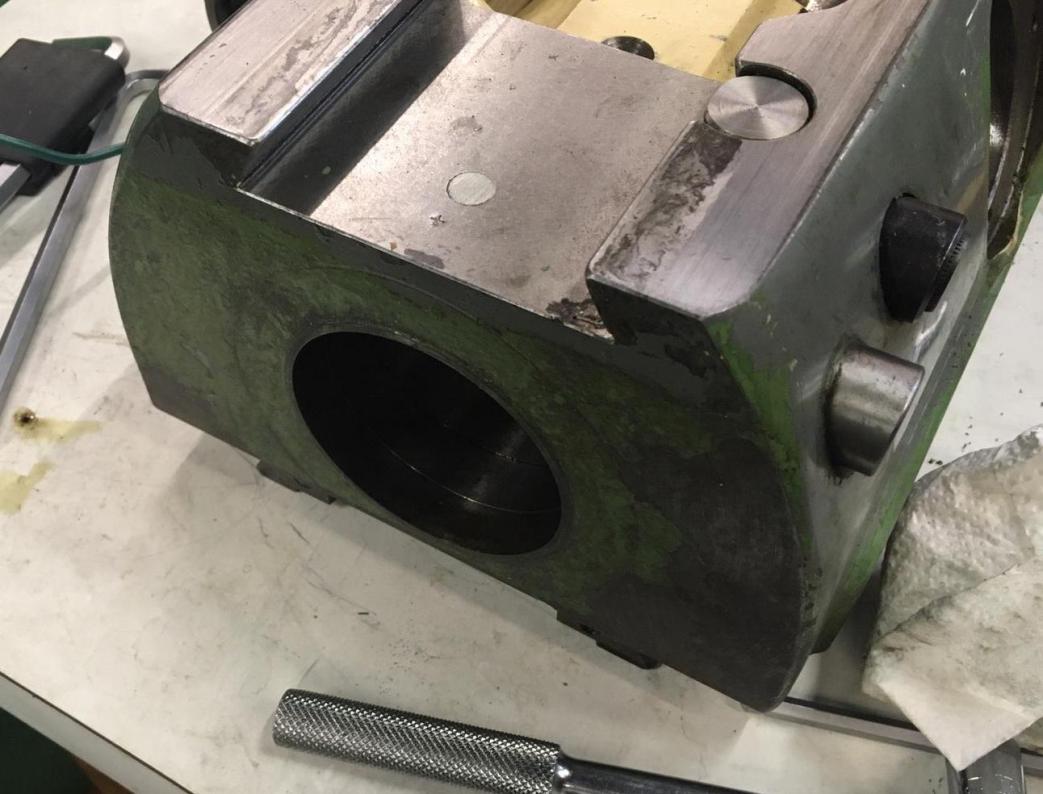ballen
Diamond
- Joined
- Sep 25, 2011
- Location
- Garbsen, Germany
I've got the headstock (horizontal spindle ram) off my 1964 FP2 in order to paint it. First time it's been off the machine in 6 or 7 years. I've got a couple of questions:
- Should I paint the end around the spindle nose (photo below)? Or remove the paint and leave it blank (or scrape it for appearance)? Point is that I often stick a magnetic indicator base there.

- I'm going to replace the two 6010 (50 x 80 x 16mm) bearings that hold this gear. Should I do anything to the shaft to remove the marking from pushing the bearings out? For example spin it in the lathe with a bit of emery paper and oil? Or will that remove too much material?

- Once I have the Y-axis locking hardware off, I would like to pressure wash the casting with detergent before painting it. But am slightly concerned about getting water/detergent into the region around the spindle locking ring (which I have not removed, visible in the first photo above). Is my concern misplaced? I suppose I could grind a plug to the same diameter as the horizontal spindle and insert it there during the wash, if needed.
Cheers,
Bruce
- Should I paint the end around the spindle nose (photo below)? Or remove the paint and leave it blank (or scrape it for appearance)? Point is that I often stick a magnetic indicator base there.
- I'm going to replace the two 6010 (50 x 80 x 16mm) bearings that hold this gear. Should I do anything to the shaft to remove the marking from pushing the bearings out? For example spin it in the lathe with a bit of emery paper and oil? Or will that remove too much material?
- Once I have the Y-axis locking hardware off, I would like to pressure wash the casting with detergent before painting it. But am slightly concerned about getting water/detergent into the region around the spindle locking ring (which I have not removed, visible in the first photo above). Is my concern misplaced? I suppose I could grind a plug to the same diameter as the horizontal spindle and insert it there during the wash, if needed.
Cheers,
Bruce
Last edited:


 . It's my least favorite part of fixing up a machine.
. It's my least favorite part of fixing up a machine.